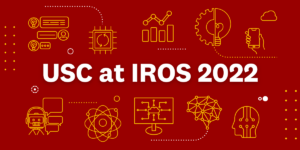
Precooling a house with AC during the day could lighten the stress on the power grid when demand surges in the late afternoon and early evening. (Photo/pinkyhong138 / Pixabay)
It’s a typical, sweltering August day in Los Angeles, with temperatures pushing 95 degrees downtown. When people get home from work in the late afternoon, the first thing they do is crank up the AC to cool their overheated homes.
Unfortunately, this surge in demand taxes the already stretched power grid, with the energy supply having great difficulty meeting the growing demand.  At 5 p.m., the California Independent System Operator, or CAISO, which runs the bulk of the state’s wholesale energy market, issues a Flex Alert, asking consumers to voluntarily cut their electricity usage. Because of the tepid response, rolling blackouts follow, cutting off power in rotating one-hour intervals to millions of Angelenos. During the outages, people can’t cook, wash their clothes, watch TV or use their air conditioning.
At 5 p.m., the California Independent System Operator, or CAISO, which runs the bulk of the state’s wholesale energy market, issues a Flex Alert, asking consumers to voluntarily cut their electricity usage. Because of the tepid response, rolling blackouts follow, cutting off power in rotating one-hour intervals to millions of Angelenos. During the outages, people can’t cook, wash their clothes, watch TV or use their air conditioning.
Researchers at the USC Viterbi School of Engineering are experimenting with a new approach to keeping the AC running, even on the hottest days — one that saves consumers money, reduces CO2 emissions from the generation of electricity, and lowers the demand for power during peak hours, thereby decreasing the likelihood of Flex Alerts and rolling blackouts.
“We want to use houses as batteries by using their thermal mass to store cool air,” said Kelly Sanders, the Dr. Teh Fu Yen Early Career Chair and associate professor of civil and environmental engineering. “And we do that through a concept called precooling.”

Kelly Sanders (Photo/USC Viterbi)
In the most comprehensive study of its kind, Sanders and Stepp Mayes, a USC Viterbi Ph.D. student in civil and environmental engineering, have found that if people sufficiently cool their homes in the afternoon when solar energy is plentiful, they will use less electricity between 4 p.m. and 9 p.m., when the power grid is most at risk of rolling blackouts. That five-hour window is the time when energy is most expensive, and, with solar vanishing from the grid as the sun goes down, electricity is often generated by gas powerplants that belch climate-warming C02.
On sweltering summer days, for instance, the USC researchers said residents could lower their thermostats to 72 degrees beginning at 2 p.m., when clean energy is abundant. When the peak demand period begins two hours later and the electricity is dirtier, they might reset their thermostats to 78 degrees. And wait. After the peak demand period passes and the grid becomes less stressed, people could reset their thermostat to a comfortable 75 degrees.
“We’d like to see people shift some of their electricity consumption, to really aggressively use air conditioning at one time of day in order to use less later by relying on a building’s ability to store energy,” Mayes said.
Precooling “works everywhere”
Precooling can make a big difference.
In Los Angeles, it could cut peak consumption of a typical single-family home by roughly 40% to 50%; reduce C02 emissions by 5% to 8%; and save customers up to $30 per month, Mayes said.
In Fresno, precooling could reduce a home’s peak electricity consumption between 20% and 40%: reduce carbon dioxide emissions by up to 5%; and save consumers an estimated $10 a month on their energy bills, he added.
Said Sanders: “Precooling is good for the electric grid, good for the environment, and good for the customer.”
After running tens of thousands of models on four types of homes, ranging from poorly insulated to well insulated, in California’s 16 climate zones, Mayes found that precooling “works everywhere.”
New ways of thinking
For decades, many believed that conserving energy was a fail-safe approach to protecting the environment.
Sanders, among others, no longer believes that’s always the case. As precooling shows, when consumers use energy is often more important than how much they use. It is sometimes better to use lots of renewable energy midday that would otherwise go to waste, she said, than to use less electricity generated by “dirty” sources such as gas and coal.
Although Sanders thinks investing in batteries is important for storing solar energy and should remain a part of any renewable energy menu, she notes that they have several drawbacks. Batteries are expensive. That’s in part because of the high cost of mining materials used to manufacture them. Equally important, the mining process can destroy animal habitats, pollute water, and otherwise damage the environment.
“I think there’s a little too much reliance on the idea that batteries alone are going to save us,” Sanders said.
Instead, she opts for a multi-pronged approach that enlists electricity consumers themselves to help create a cleaner a more reliable grid.
“If consumers would wash their dishes, charge their electric vehicles, wash their clothes and run their air conditioners in the middle of the day, we’d get cost benefits, emissions benefits, and reduce our risk of rolling blackouts,” Sanders said. “It would make a huge difference.”
Published on September 19th, 2023
Last updated on October 12th, 2023











